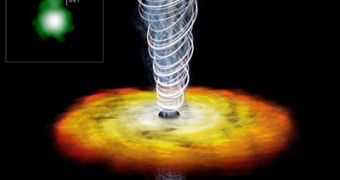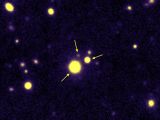A team of astronomers discovered this year the first known triple quasar, a space oddity, since the statistical probability of the existence of such a quasar says it's an extremely rare association.
Quasars are extremely bright and distant astronomical objects thought to be the active nuclei of young galaxies. Most galaxies, including the Milky Way, are thought to have supermassive black holes at their centers, but not all such black holes are quasars.
The astronomers at the Ecole Polytechnique Federale de Lausanne in Switzerland and the California Institute of Technology, discovered the first ever quasar triplets using the European Southern Observatory's Very Large Telescope and the W.M. Keck Observatory.
According to ESO, the three quasars are located about 10.5 billion light years away from Earth, toward the Virgo constellation - a constellation of the zodiac lying between Leo to the west and the Libra to the east, and one of the largest constellations in the sky - but are only a hundred thousand light-years apart from each other.
Quasars are extremely bright and distant astronomical objects made up of a compact halo of matter surrounding the central supermassive black hole of a young galaxy.
More than 100,000 quasars are known, of which only about a hundred are believed to be binaries - an orbiting pair of supermassive black holes that come together when two galaxies collide and merge - and even fewer triple, like the recently found one. In 1979 the gravitational lens effect predicted by Einstein's General Theory of Relativity was confirmed observationally for the first time with images of the double quasar 0957+561.
"Quasars are extremely rare objects," says Caltech's George Djorgovski, leader of the team. "To find two of them so close together is very unlikely if they were randomly distributed in space. To find three is unprecedented."
This unprecedented discovery may help astronomers find out more about the new and potentially violent ways that three quasars in close quarters might interact.

 14 DAY TRIAL //
14 DAY TRIAL // 
